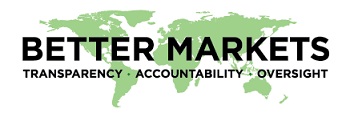The rapid growth of the securitization market is said to have played an important role in the U.S. subprime mortgage crisis and was a key factor, amongst others, in triggering the 2008 global financial crisis.
Securitization is the financial practice of pooling various types of contractual debt such as residential and commercial mortgages, loans or credit card debt and selling this consolidated debt on to investors.
Better Markets, a U.S. based non-profit organisation advocating financial reform in global capital and commodity markets, reported on the adoption by the U.S. Securities and Exchange Commission (SEC) of a rule that appears to substantially improve the disclosures that must be made to investors in asset backed securities (ABS).
Whereas this is a step in the right direction, more needs to be done. The complexity inherent in securitisation can limit investors' ability to monitor risk and the fact that little or no risk is retained by those issuing the securities have both led to sharp declines in underwriting standards. Due to the inherent nature of securities, there is little or no incentive on the part of issuers to choose and monitor assets more carefully.
To address this issue of disincentives, the SEC must also pass strong, effective rules on risk retention and eliminating conflicts of interest by, for instance, requiring issuers of ABS to retain some of the risk of their investment offerings.
At a time when the European Central Bank (ECB) is considering the purchase of securitised debt such as asset backed securities to help boost euro zone growth, reforms in the U.S. will be keenly followed by policy makers Brussels.
Read more here:
Fixing the ABS Conveyor Belt for Toxic, Worthless Securities; Better Markets, 27 August 2014
EU sets out roadmap to boost securitised debt market; Reuters, 22 August 2014

